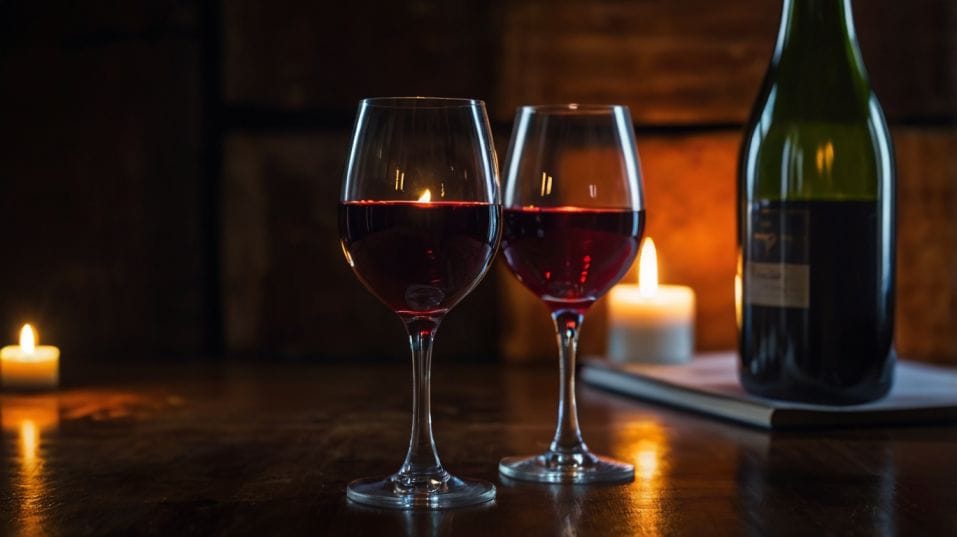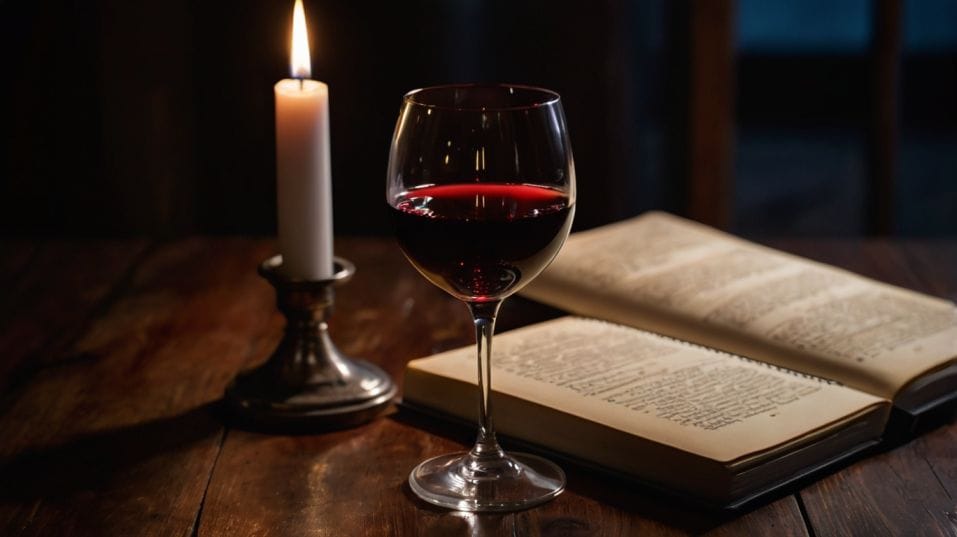How to Compare Two Wines Side by Side
Learn how side-by-side wine tasting sharpens your palate, builds wine confidence, and helps you make smarter, more satisfying choices.

Ever wondered how to actually learn from a glass of wine—not just drink it? The secret is simple: taste two wines side by side.
That’s when contrast sharpens your senses and the details start to click. No sommelier speak required. Just pour, compare, and notice what shifts.
This isn’t about being right—it’s about learning what you like and why. Ready to make your palate smarter with every sip?
Why Side-by-Side Matters
Tasting two wines together reveals more than either wine would on its own. Wine doesn’t live in a vacuum.
Everything you taste—whether it’s crispness, sweetness, texture, or depth—comes into focus only when there's something else to measure it against.
A wine might seem bright until it’s next to one that really crackles with acidity. A wine that once felt full-bodied might suddenly seem light, almost lean.
That contrast is the learning zone. You’re not just sipping—you’re calibrating your senses. The goal isn't to crown a winner. The goal is to train your palate to pick up on difference, detail, and nuance.
Set the Scene Thoughtfully
Start with two wines that share some common ground—but differ in a meaningful way. The more focused your comparison, the more you’ll learn.
Examples That Work Well
You might pour:
- The same grape from two different regions
- Two vintages of the same wine
- A natural wine and a conventionally made counterpart
- A Chardonnay that’s oaked vs. unoaked
- A youthful red vs. one with a few years of age
This isn’t about wild opposites. It’s about controlled contrast. Think of it as giving your palate a direct line to what matters.

Practical Setup Tips
Use identical glasses for both wines. That one simple detail controls for how aromas behave, how the wine hits your palate, and even how the color looks. It also prevents your brain from favoring the “nicer” glass.
Serve both wines at appropriate temperatures—cool but not cold for whites, lightly chilled or room temp for reds. Let them breathe for a few minutes after opening.
Even ten minutes can change how a wine presents itself in the glass. Air helps open the structure, soften rough edges, and release aromas that were tight on first pour.
Smell First, Think Later
Start by smelling both wines before you swirl. This gives you a clean read on volatile aromas—the ones that jump out quickly. Then swirl and smell again.
Swirling releases deeper, more layered scents. Go back and forth between the glasses. Don’t worry yet about naming anything. Just notice what’s more intense, what feels rounder, sharper, warmer, cooler.
Then taste. Small sips, alternating between the wines. Pay attention to how each wine moves through your mouth. How does it enter—sharp, soft, neutral?
Where does it sit—front of the tongue, back of the throat, roof of the mouth? Does it finish quick or linger? That movement is just as important as flavor.
Look Beyond the Flavor Wheel
Too many beginners get stuck trying to name fruit flavors. Peach, cherry, tobacco, spice… It's fine if you can call those out, but it’s not the main event. Structure tells you more. Pay attention to:
- Acidity – Does the wine make your mouth water? Is it mouth-cleansing, or soft and round?
- Tannin – Do you feel a drying sensation on your gums or tongue? How firm or fine are those edges?
- Body – Does the wine feel light, medium, or full in weight? Is it dense or airy?
- Texture – Is it silky, gritty, oily, coarse?
- Finish – Does the taste fade immediately, or does it evolve long after you swallow?
These qualities reveal a wine’s origin, technique, and intention. More importantly, they help you understand what you enjoy—which will guide better choices down the road.
Time Is Part of the Tasting
Good wines change in the glass. Let them sit. Revisit them after 15 minutes. Smell again. Taste again. You may find that one wine opens up beautifully while the other fades.
That kind of evolution teaches you about structure, age-worthiness, and balance—all without needing a textbook.
Some wines bloom with time, revealing florals, spice, or earthy tones that weren’t there on first sniff. Others tighten up or show their flaws. Time is the third player in your side-by-side tasting. Don’t rush it.
Make the Experience Your Own
If you’re keeping notes, keep them short and real. Skip the poetic metaphors. Write what actually struck you:
- “Softer after swirling”
- “More bitter but interesting”
- “Feels heavier than it tastes”
- “Lost energy after 10 min”
That kind of shorthand builds your tasting memory in a way formal notes never will. It helps you develop your own language around wine—and that’s far more useful than memorizing someone else’s descriptors.
Tasting With Others
If you're tasting with friends, encourage conversation but don’t push for consensus. You’ll learn as much from disagreement as from agreement. Ask questions like: Which one keeps pulling you back? Which one surprised you?
What You Learn Over Time
Side-by-side tasting isn’t just a practice—it’s a mindset. It trains you to stay curious, to trust your instincts, and to connect the dots between what’s in the glass and what’s behind it: grape, place, climate, technique, culture.
With repetition, you’ll start to recognize patterns. Cooler-climate wines often feel brighter. Oak often brings weight and spice. Age softens edges and deepens complexity. These aren’t just facts—they’re sensations you’ve now felt.
And that’s when things start to click. You won’t just know more. You’ll feel more confident, more intuitive, and more in control of your own wine journey.
Final Thoughts
Tasting wine side by side isn’t complicated—but it is powerful. It accelerates your learning, deepens your understanding, and helps every bottle mean more.
You don’t need fancy bottles or perfect technique. You just need curiosity, a little structure, and a willingness to pay close attention.
So try it tonight. Pour two wines. Sit down, no rush. Taste slowly, think critically, and listen to what the wines tell you.
This small habit builds serious skill—and turns drinking wine into something far more rewarding. Your palate is ready. All you have to do is pour.




